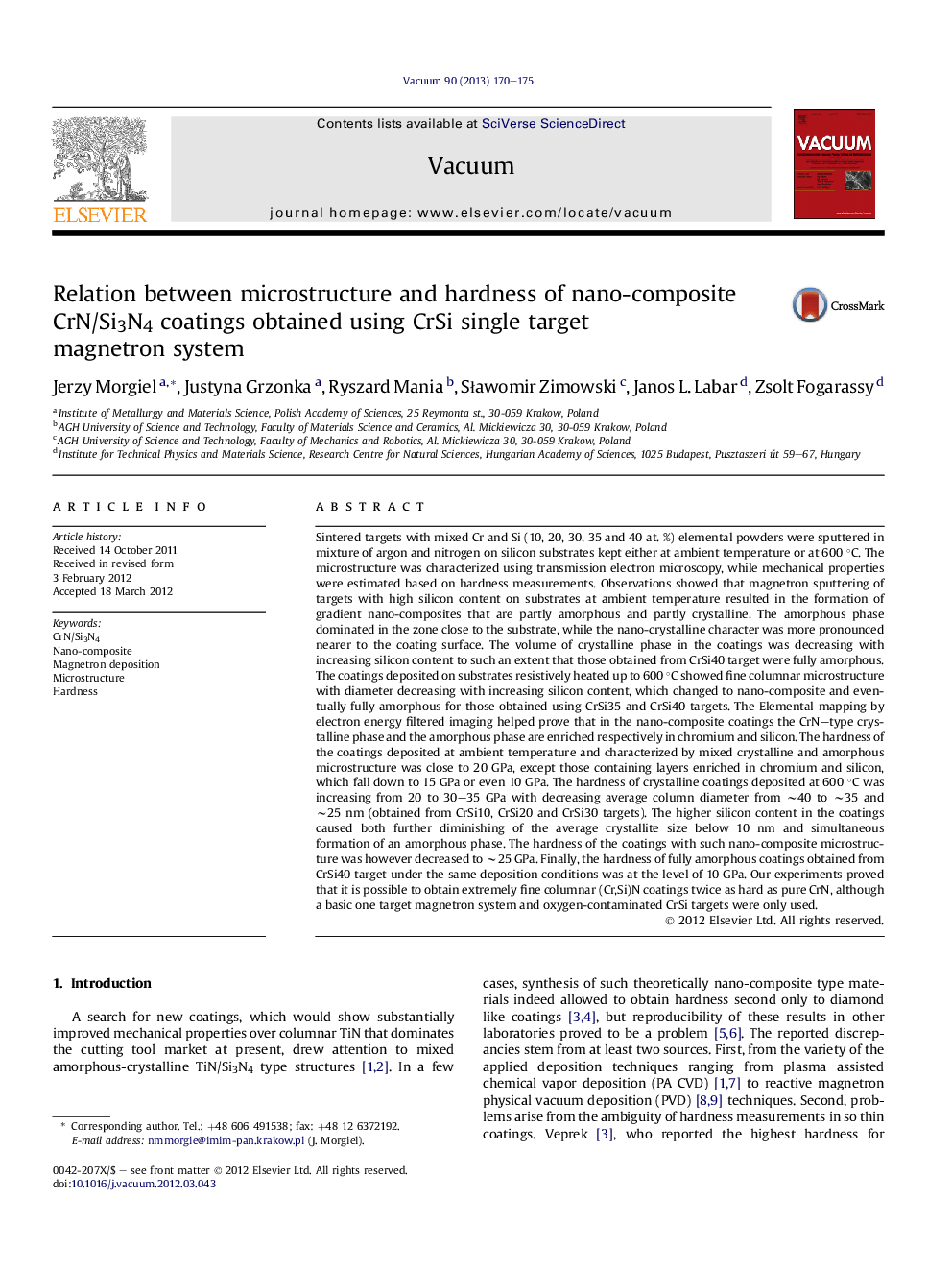| Article ID | Journal | Published Year | Pages | File Type |
|---|---|---|---|---|
| 1688808 | Vacuum | 2013 | 6 Pages |
Sintered targets with mixed Cr and Si (10, 20, 30, 35 and 40 at. %) elemental powders were sputtered in mixture of argon and nitrogen on silicon substrates kept either at ambient temperature or at 600 °C. The microstructure was characterized using transmission electron microscopy, while mechanical properties were estimated based on hardness measurements. Observations showed that magnetron sputtering of targets with high silicon content on substrates at ambient temperature resulted in the formation of gradient nano-composites that are partly amorphous and partly crystalline. The amorphous phase dominated in the zone close to the substrate, while the nano-crystalline character was more pronounced nearer to the coating surface. The volume of crystalline phase in the coatings was decreasing with increasing silicon content to such an extent that those obtained from CrSi40 target were fully amorphous. The coatings deposited on substrates resistively heated up to 600 °C showed fine columnar microstructure with diameter decreasing with increasing silicon content, which changed to nano-composite and eventually fully amorphous for those obtained using CrSi35 and CrSi40 targets. The Elemental mapping by electron energy filtered imaging helped prove that in the nano-composite coatings the CrN–type crystalline phase and the amorphous phase are enriched respectively in chromium and silicon. The hardness of the coatings deposited at ambient temperature and characterized by mixed crystalline and amorphous microstructure was close to 20 GPa, except those containing layers enriched in chromium and silicon, which fall down to 15 GPa or even 10 GPa. The hardness of crystalline coatings deposited at 600 °C was increasing from 20 to 30–35 GPa with decreasing average column diameter from ∼40 to ∼35 and ∼25 nm (obtained from CrSi10, CrSi20 and CrSi30 targets). The higher silicon content in the coatings caused both further diminishing of the average crystallite size below 10 nm and simultaneous formation of an amorphous phase. The hardness of the coatings with such nano-composite microstructure was however decreased to ∼25 GPa. Finally, the hardness of fully amorphous coatings obtained from CrSi40 target under the same deposition conditions was at the level of 10 GPa. Our experiments proved that it is possible to obtain extremely fine columnar (Cr,Si)N coatings twice as hard as pure CrN, although a basic one target magnetron system and oxygen-contaminated CrSi targets were only used.
